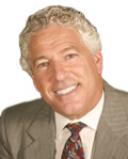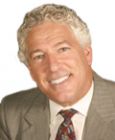Leadership
Woodstock Wisdom and Leadership Lessons 50 Years Later
Four leadership lessons that were stimulated by my Woodstock experience
Posted August 6, 2019
Fifty years ago, three of my high school friends and I borrowed my mom’s station wagon and headed up the New York Thruway from New Jersey to Bethel, New York's Woodstock Festival, an event that was billed as three days of “peace and music.”
We came from a suburban bubble filled mostly with sports, friendships, and our girlfriends and didn’t know at the time, how this three-day experience was going to be foundational in many ways for our future and our generation.
As a psychologist, executive coach, corporate trainer, and author, I learned many lessons from Woodstock that have grown into integral concepts and best practices of emotional intelligence and leadership development.
Below are four lessons I learned, and that I believe leaders, managers, teachers, and parents can use for their benefit. (Other key kernels of wisdom will be explored in my next blog post.)
1. Music unites us: Brain chemical cocktails
In 1969, the country was deep into the controversial Vietnam War, a conflict that many people vehemently opposed then. It was also the era of the Civil Rights Movement, a period of great unrest and protest. Woodstock was an opportunity for people to escape into a world of music and spread a message of unity and peace.
It's long been said that music is a medicine for the mind. Research shows that listening to music can reduce anxiety, depression, blood pressure, and pain as well as improve sleep quality, mood, memory, increase some cognitive functions, enhance learning and concentration, and ward off the effects of brain aging. Woodstock was an oasis for all the participants looking to get away from the stresses of the day and sway in a primordial way together.
Music boosts brain chemicals and activates many parts of the brain, whether it be through dancing, or through our emotional responses when we recognize a favorite song.
One of the ways music affects mood is by stimulating the formation of certain brain chemicals. Dopamine is the brain's “motivation molecule” and an integral part of the pleasure-reward system. Oxytocin increases emotional understanding and helps create peak experiences.
Saturday was the day we saw most of the music.
In the afternoon some of the highlights we saw were, Country Joe McDonald singing “I Feel Like I'm Fixin' to Die Rag," and Santana's 11-minute throbbing instrumental performance of "Soul Sacrifice." This performance put the band on the map before its first album came out.
The evening's highlights included Mountain singing “Mississippi Queen,” and The Grateful Dead singing “Turn on Your Love Lights," and Creedence Clearwater Revival singing “I Put A Spell on You.”
At around 2 a.m. we moved to the front of the crowd and ended up 20 feet from the stage. We saw Janis Joplin performing “Work Me Lord,” Sly and the Family Stones singing “I Want to Take You Higher,” The Who singing “My Generation,” and Jefferson Airplane who came on at 8 a.m. singing “Volunteers.” After that performance, we staggered back to our tent exhausted, not realizing that we had just witnessed one of the most outrageous collections of music and bands ever assembled.
What leadership lessons can be learned from watching these bands play? We know that it's important for leaders to create a sense of team harmony. It adds to the productivity of its team members, a better work environment, and group-member retention. Do your employees feel that they are singing from the same song sheet? What do they sway to? Do the vision and mission of the company resonate with them?
Communication experts tell us that the way we speak, our tonality, connects with people more than what we are actually saying, similar to the way that a song's melody can impact us, regardless of its lyrics.
Are your words crafted for just the right message and impact, or are they released on autopilot with less of a chance of arriving at your desired destination? Taking a few moments to actually think about what you want to say and how you want to say it can have a greater impact on listeners.
2. Experiences expand the brain: New learning
None of us recent and somewhat innocent high school graduates knew what this Woodstock experience would hold for us. It was a smorgasbord of new experiences that included getting along with a diverse crowd of people, listening to new music, and wet and muddy weather conditions.
- Close to 500,000 people gathered in a small setting for “music and peace”
- Limited food and resources
- Top bands playing all through the night
- Rain and mud conditions
- Diverse set of people
- People using all kind of drugs we hadn’t seen before, like a person shooting up in a car
- More nudity than we had ever seen in the locker room
Experts say that have about 85 billion neurons. New experiences will either change the structure of its neurons (cells) or increase the number of synapses between your neurons, allowing them to send and receive information faster.
Woodstock opened us up to diversity and a whole new world in three short days.
Learning is important for leaders and their teams. To keep people motivated and productive, new learning and career growth are important components. As a leader, what new experiences are you providing for your team members, employees, and family and friends that stimulate their brains, and increase new synapses and connections?
3. Shared Vision
One of the most challenging things for leaders I work with is to develop a unifying and shared vision for their organization. A vision is a way for the company to express what it does to help its clients and society–why the company exists and what purpose it serves.
At Woodstock, everyone was there for the same reasons: to share in the music and the fun, and form a community.
Leaders have to help people connect the dots on how their efforts contribute to the greater good of the company and the population it serves. It is easy to just do tasks and not realize the value you bring to others and the projects. Leaders have to remember the shared vision of the company and communicate it to each team. It could be corporate, or even family values, that unify and create the glue that keeps people united when times are challenging.
4. Emotions dominate decision making: Beer or bags?
To get ourselves settled for the festival, my friend Ron and I carried our huge four-man tent (there were no light backpacking tents in those days), and our other friends, Don and Clark, carried gym bags full of our clothes, and a case of beer.
Ron and I hopped on the back of a car with the tent and were supposed to meet up with Don and Clark down the road to set up our tent and things. They got lost in the thrill of the concert and the crowds, leaving them without a tent, and us without or bags of clothes and our beer.
We set up our tent and caught Joan Baez's performance that Friday night and it rained the entire evening. Our friends, who couldn't find us amidst the crowded concert, were tentless.
They cursed us out and made an emotional decision. With all of the heavy belongings they had to carry, they knew they had to give something up in order to keep moving and find us. They could either keep the now warm case of beer, or our gym bags. Resentment set in and the beer won out. When we did finally meet them on Saturday, Ron and I couldn’t believe they threw our clothes out.
We know now that most decisions we make are highly influenced by our emotions. The biggest derailer we see with leaders today is the lack of impulse control, be it sexual or emotional.
Daniel Goleman, author of the book Emotional Intelligence, popularized the term “amygdala hijack.” The amygdala is the primitive emotional part of the brain and its emotional reactions overpower rational decision-making. The beer or bags dilemma was one of my first head-shakers about someone’s decision-making process. Since then, I have seen emotions overrule logical thinking too many times in various professional organizations.
Woodstock is perhaps best described by Max Yasgur, the humble farmer who lent his land for the occasion. He addressed the audience on the third day of the festival saying, “…You’ve proven something to the world…the important thing that you’ve proven to the world is that a half a million kids...can get together and have three days of fun and music...and God bless you for it!”
As somewhat naive young men, our eyes were opened wide and synapses increased, as we saw people who had a vision for how peace and music could help people connect and thrive.
I'll cover six more kernels of leadership lessons in the next blog post.
Visit my website for EI tools.
References
References:
1. https://en.wikipedia.org/wiki/Counterculture_of_the_1960s
2. https://en.wikipedia.org/wiki/Rolling_Stone
3. Kilgannon, Corey (March 17, 2009). "3 Days of Peace and Music, 40 Years Later". Arts. The New York Times.
4. Newberg, A. and Waldman, M.R. (2012) Words Can Change Your Brain, New York: Penguin Group
5. "Baby Boomer Generation Fast Facts". CNN. November 6, 2013.
Kilgannon, Corey (March 17, 2009). "3 Days of Peace and Music, 40 Years Later". Arts. The New York Times.
"Baby Boomer Generation Fast Facts". CNN. November 6, 2013.
Joni Mitchell said, "Woodstock was a spark of beauty" where half-a-million kids "saw that they were part of a greater organism".[11]
"State Investigating Handling of Tickets At Woodstock Fair". The New York Times. August 27, 1969. p. 45. Of the 400,000 who attended, half did not have a ticket.
10. Mindwise.org, Benefits of Social Connections
11. Duckworth, A. (2016) Grit: The Power of Passion and Perseverance: New York: Simon & Shuster
12. Wikipedia, “Woodstock”




